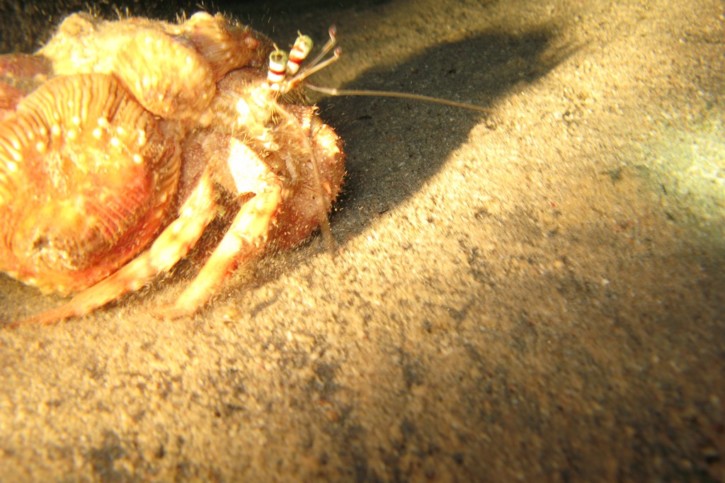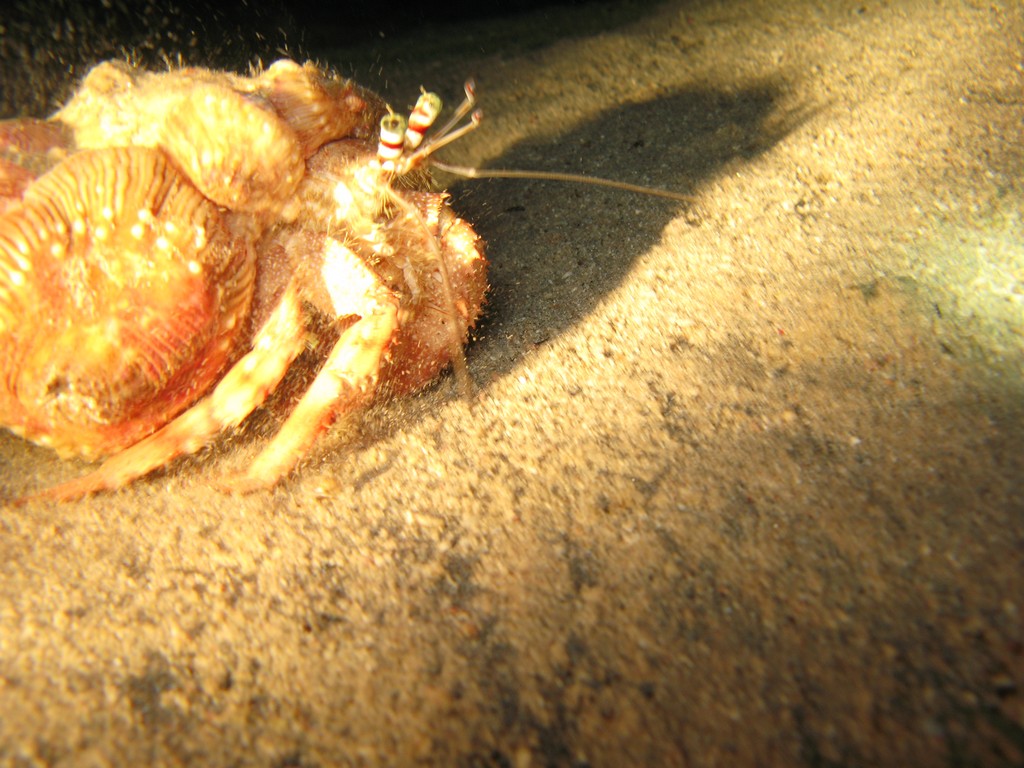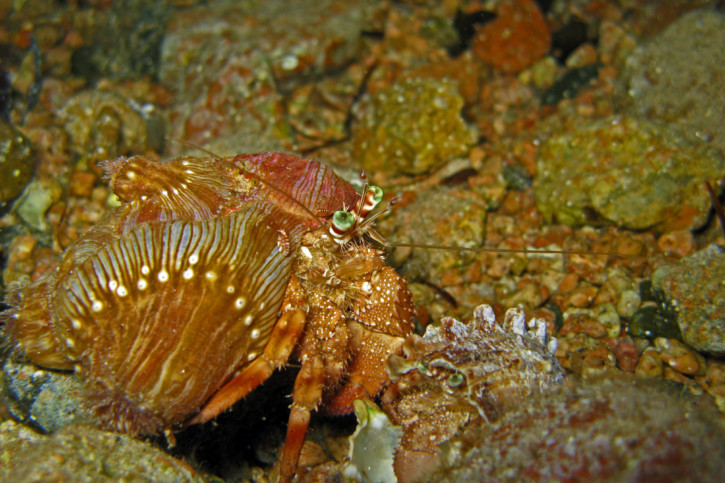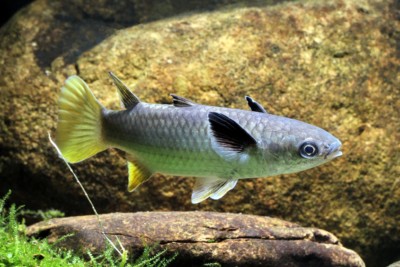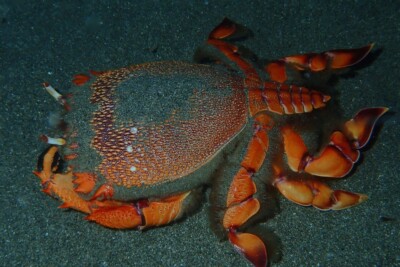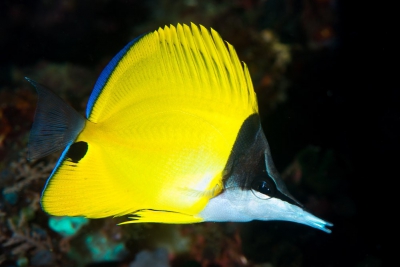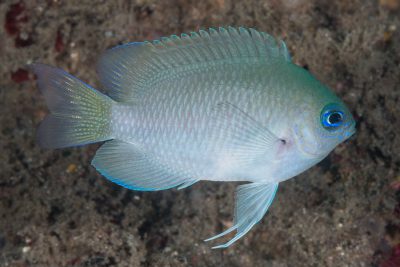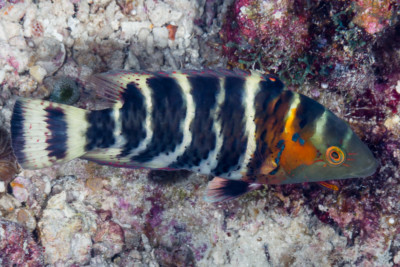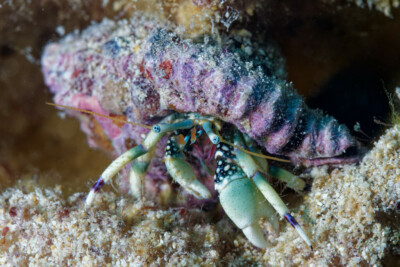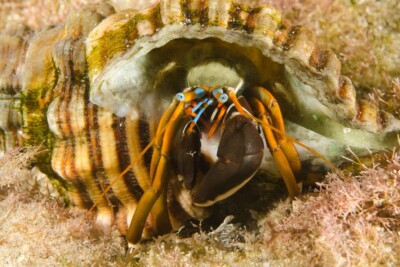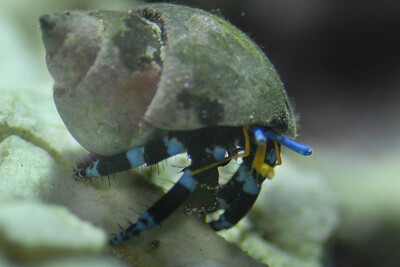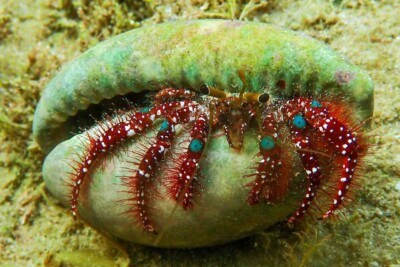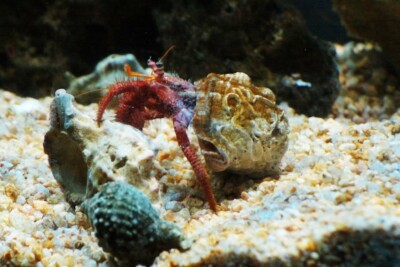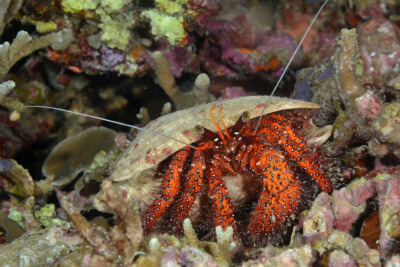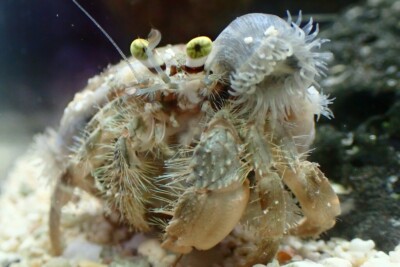Introduction
Dardanus tinctor is a salt water crustacea.
This sheet is currently being prepared. The texts currently proposed come from our data model or are being drafted. To request priority for this content, you can write to us HERE.
Who is it?
Morphology
-
Average size9 cm
-
Maximum size10 cm
-
ShapeUnclassifiable
-
Average size9 cm
-
Maximum size10 cm
-
ShapeUnclassifiable
How to recognize this crustacea ?
Dardanus tinctor measures between 9 and 10 cm.
Behaviour & Life cycle
-
Sociabilitysolitary
-
territorialNo
-
VenomousNo
-
Way of livingnocturnal
Like all crustaceans, Dardanus tinctor molts whenever it becomes cramped in its shell. Before the hardening of its new body, it is more vulnerable and spends a good part of its time hidden. This mechanism, very complex, allows the periodic renewal of the exoskeleton and part of the internal skeleton. It is also during the moult that the females become fertile.
Dardanus tinctor is a crustacea solitary. This species is omnivorous with alguivorous tendency . this crustacea lives mainly at night. Usually, it leaves its hiding place and starts to be active once it gets dark.
Although Dardanus tinctor is non-territorial, it is sometimes aggressive towards other species.
Dardanus tinctor has a tendency to dig the ground and bury itself in caves to take refuge.
Reproduction
Harmless species
This species does not represent any particular threats to humans when encountered in its natural environment.
Origin and distribution

Conservation status of populations (IUCN)
What is its habitat?
Natural environment characteristics
-
Temperature24 - 28 °C
-
Depth0 - 0 m
Biotope presentation
Species of the same biotope
Fishkeeping
Not recommended
We do not recommend keeping this species in an aquarium. It has unpredictable needs which, if not met, generate significant stress, potentially leading to a shorter life expectancy, an interruption of its growth or the development of pathogens.
To go further
Sources & Contributions
Participation & Validation
The Fishipedia team and specialist contributors are committed to providing high-quality content. However, although the information comes from scientific sources or testimonials from specialists, the cards may contain inaccuracies.
Translation
Translation done with the valuable contribution of our translators, who make this information available to a wider audience. We sincerely thank them for their commitment.
Scientific partners
Tags
Species of the same family
Same genus
Species of the same biotope
